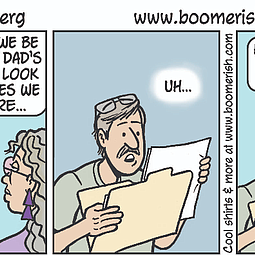Understanding and treating female hair loss
April 23, 2012 at 6:00 a.m.
Female hair loss differs quite a bit from male baldness in a number of ways. While male pattern baldness is often seen as common place and female hair loss as more of a rarity, the fact of the matter is that female hair loss affects some 5 percent of all women under 30 and a whopping 60 percent of women over that age.
Now, this includes everything from thinning hair to major hair loss, but these numbers should nevertheless go to prove that this isn't as rare an occurrence as we might like to believe. The market for female hair loss remedies didn't spring up out of nowhere.
Female pattern hair loss usually has to do with genetic history and can be inherited from either the mother or the father's side. Known as androgenetic alopecia, this type of hair loss can actually start as early as the late teens. Where men will get a bald spot on top of their head or see their hairline recede, women will see a general thinning throughout.
Interestingly, this is actually caused by a shortened growth cycle that stops the hair from reaching its natural length before shedding.
The most common and most effective female hair loss treatment is minoxidil, the very same treatment used in most male baldness solutions. The standard treatment for women is a 2 percent formula, but many women find that the 5 percent formula sold to men is actually more effective. The 2 percent is available in liquid and the 5 percent is available in either liquid or foam. All of this is sold over the counter, but know that the 5 percent sometimes results in increased facial hair growth.
Minoxidil is topical and causes hair to grow almost anywhere it's applied, which is why men who use the stuff to create an artificial hairline often wind up with a very fake looking head of hair: It's not the hair treatment that's the problem, it's clumsy application of said treatment. By massaging it through the scalp and being careful to clean any that spills or splashes, you should have no problem getting a full, lush head of hair.
There is a "laser comb" on the market for men right now that uses red light therapy to encourage hair growth, and while some women have had positive results with the treatment, few report results as strong as you get with minoxidil.
What may surprise you is that if you are dealing with female pattern hair loss and you begin a treatment routine, you actually shouldn't change your hair care and styling habits unless specifically instructed by your doctor. The problem is not with what you're doing to your hair, the problem is primarily genetic. If you perm, dye or use a special scented shampoo, just keep doing what you're doing. Although, adding an anti-dandruff shampoo to deal with the dryness and flaking that can occur while dealing with hair loss isn't a bad idea.
Note that hair loss can also be a sign of hyperandrogenism, defined as the body producing too much of a male hormone known as androgens. Besides hair loss, this can also lead to irregular menstruation, acne and other problems. While minoxidil will help recover hair lost due to hyperandrogenism, you will want to talk to a doctor about treating the condition itself.
Content Provided by Spot55.com





